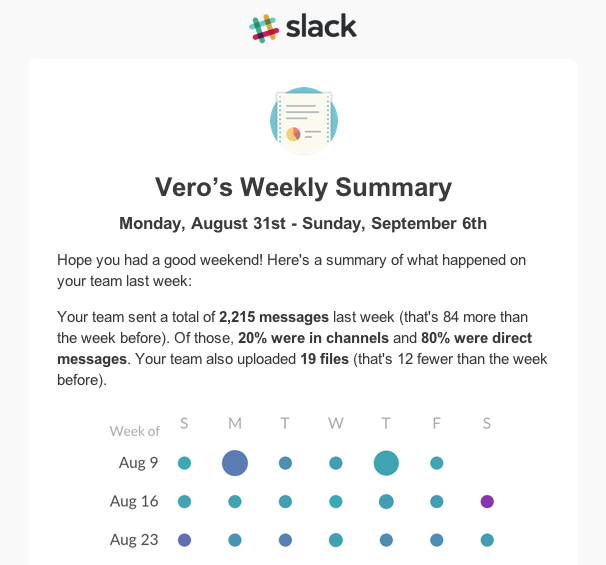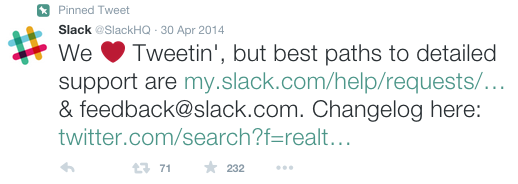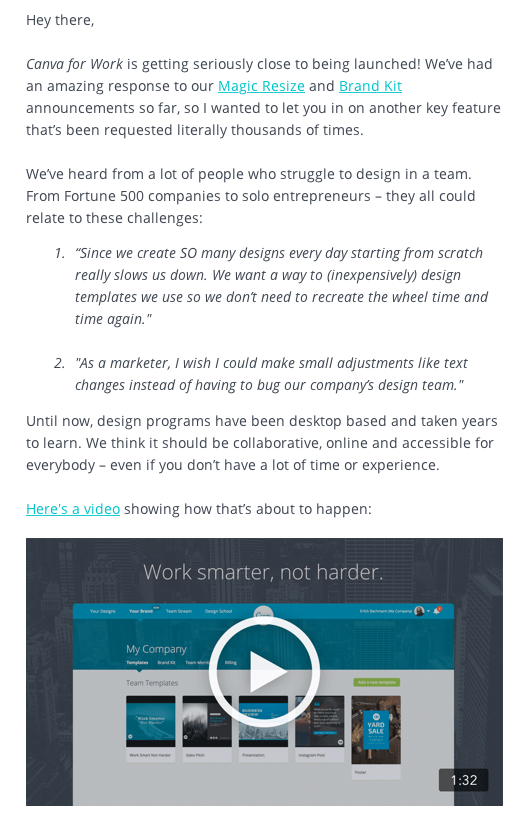Create emails that actually engage with these core principles
-
UncategorizedUpdatedPosted:
On this page
When the average person opens their inbox in the morning, most of the emails they receive don’t engage.
The question we have to ask is what distinguishes those emails that do engage?
The answer is that we pay attention to emails that have context (one of our favourite words here at Vero).
Good emails are not just random rows in the inbox – they are part of an end-to-end user experience that has continuity. The emails in the top 10% that drive interactions are, basically, helpful.
Product, design, marketing and engineering teams have to work together to create this sort of seamless user experience because great customer experiences infiltrate all elements of customers’ interactions with your business.
When I go to the Apple Genius Bar, they look my purchase history on their iPad, allowing them to be more helpful when working with me. This context helps Apple’s support team (the Geniuses) to treat me as an individual.
Amazon knows that showing me the latest books in my favourite category is more helpful when I’m selecting my next read than showing me a random selection. These recommendations have more context.
Trello knows that sending me an aggregate email of the mentions and activity I’ve missed whilst offline is more helpful than sending me a single email with every activity (even those I saw online). After all, this email has a lot more context.
These sorts of experiences aren’t an accident.
Email is a huge component of your customer interactions. Here at Vero, whenever we see businesses creating sub-par experiences, there are a few things that they tend to get wrong.
The following are the key principles I see the best Vero customers using time and again to send great emails. Emails that are part of a fantastic user experience.
Know who you’re talking to
At Vero, one of the things we talk about most frequently is a single, holistic view of each of your customers.
You can’t send something helpful if you don’t know knowing anything about who you’re emailing.
This sounds obvious – but for most businesses not using the right tools, answering questions like “Has the user been to your site before? Is this their first experience of your product? Do they regularly open emails? Have they paid you before?” is really hard.
Having the answers to these questions on hand, as actionable data stored against an individual customer’s profile in a database, allows the best product and marketing teams to move quickly and tailor any campaign they send.
Here’s a really simple example of how we do this at Vero.
When the administrator at a Vero company invites a new user to their Vero account, we send that new user a welcome email.
We don’t send the same email to every person that is invited. If you’re invited to a Vero project as a developer, we won’t send you the same content we’d send a user that is invited as a marketer, and so on. We aim to be helpful by sending only the information that you need, not the information someone else on your team needs.
We couldn’t do this if we didn’t have the data to determine what
type of user each specific recipient is. This is the reason we
built Vero around a database, or CRM, rather than a list. Each
individual user has a single record in Vero, and we append and
update data, such as their user_type in real time.
We store the user_type with a value of
developer (or marketer or
admin and so on) at the moment the user is invited by
their colleague. We can use the user_type to very
clearly define what we should put in the email.
Basically, the data we store in Vero is gospel, and we store lots of data about each of our customers. Last week we spoke about how we are now using the data in Vero to improve our customer support experiences too, by integrating Vero and HelpScout. This means the exact same information that powers our automated emails shows up next to customer profiles in HelpScout, making sure our team has a lot more context when talking to customers, a bit like the Geniuses at the Apple store. Read more about this.
By treating Vero as gospel, we are able to know who we are talking to at any given time.
Be consistent
The second most common thing that stops companies creating great user experiences is a lack of consistency.
To see a good example of a company that is consistent in their image and tone, check out Slack. They are amazing at using the same tone and design, in their product, in their emails, in their tweets, in their help articles – basically in everything they do.
Here’s some emails and tweets, to show you what I mean:


This consistency requires everyone across your company to know what your company stands for and to have access to the resources to make it happen.
In order to keep the design consistent in your emails, having a single place to store your templates, and a tool that allows you to change copy in any newsletter or automated campaign at any time is an important step to ensuring that every email you send is consistent.
At Vero, our emails are written by our product team, our growth team, our support team and our engineering team. Anyone can login and create an email, and everyone has access to the same set of templates. These templates can easily be reviewed and collaborated on by the various teams at Vero and this empowers everyone to talk more directly with our customers.
It also means we’re more consistent. We can invest in design and ensure everyone benefits from it.
This is one of the key reasons we’ve built Vero to handle all of your emails in one place and to give you an interface to manage and edit copy and design without having to update code.
You can send one-off newsletters, recurring daily/weekly/monthly emails, triggered product emails, transactional emails and more – all from the same interface. All of these campaigns can be built using the same templates and you can login and update the content of emails at any time, without requiring a fundamental code change or passing the work off to the engineering team.
This goes a long way to improving consistency and it’s done wonders for us.
Don’t bombard
Don’t email everyone, everything, all the time.
Sending multiple emails in the same day, or sending too many emails with different information simply irritates most people. There are exceptions to the rule but, most of the time, it makes you look disorganised or confused.
The best way to combat sending too much is to have a strategy. Having an over-arching strategy means you won’t rush and it means you’re more likely to send emails in a logical rhythm, rather than randomly.
You can enforce this with process and smart segmentation. A great example is the release cycle around a new product or feature. One of our customers, Canva, recently released the fantastic Canva for Work and I really enjoyed the emails they sent me leading up to it.

They sent these emails with a good cadence and each explained a new aspect of Canva. They took the recipient on a journey, and their emails complemented their updates on social media and other channels.
Using Vero enabled Canva to ensure they didn’t send to many emails to specific groups of customers, or email the wrong group of users entirely, and helped them deliver on the launch of Canva for Work.
In Vero, you can send newsletters and automated emails, including transactional emails (receipts, invites, etc.) and this means you can easily filter out users that have received or interacted with an email recently – whether you want to filter out users who have opened any email, or even just those that have interacted with a specific email.
For many businesses, sending too often is an accident – it’s hardly by design. This is why we’ve put a lot of effort into capturing and storing what you send with Vero and making it possible for you to segment on this data. We’re even making it easier for you to plug into Mailgun, Sendgrid, Mandrill and other transactional email platforms so you can still use these great services and capture the details in one place, helping prevent fatigue.
Being in the top 10% of emails that really engage is about treating your customers with respect.
It might sound obvious but if you put time and effort into understanding who you’re about to email, stay consistent and don’t email too often then you’ll really stand out from the crowd.
Want to send more personalized mobile and email messages to your users?
Learn moreCustomer story

How Vero helps Plann cater to the needs of an agile startup that's scaling up quickly

